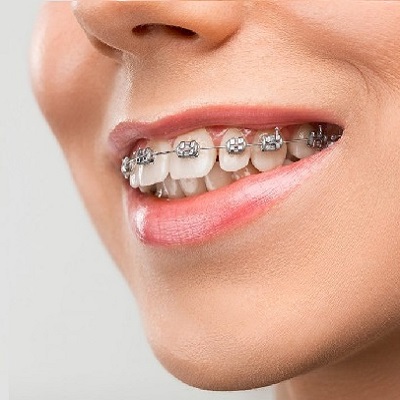Tooth extractions are sometimes necessary to protect your oral health. Whether the extraction is due to decay, infection, overcrowding, or impacted teeth, proper aftercare plays an important role in the healing process. Many patients worry about discomfort or complications after an extraction, but with the right steps, healing can be smooth and predictable. Patients who receive tooth extractions in Phoenix or tooth extractions in Arizona can benefit from understanding the best aftercare practices to support a healthy recovery.
Understanding the Importance of Aftercare
Aftercare is essential because the area where the tooth was removed needs time to heal. The body forms a blood clot at the extraction site, which protects the bone and nerves underneath. Without careful attention, this clot can become dislodged. When this happens, a condition called dry socket can occur, which is painful and delays the healing process.
Following your dentist’s instructions closely helps prevent complications, reduce discomfort, and promote faster healing. Good aftercare also lowers the risk of infection and supports long-term oral health.
Managing Pain and Swelling
Some discomfort and swelling are normal after a tooth extraction. Pain is usually mild to moderate and improves within a few days. Your dentist may recommend over-the-counter pain relievers or prescribe medication if needed. Be sure to take all medications exactly as instructed.
Swelling can be controlled by applying a cold compress to the outside of the face. Place the compress on the cheek for fifteen minutes at a time, then remove it for fifteen minutes before repeating. This reduces inflammation and helps you feel more comfortable during the first twenty-four hours.
Patients who undergo tooth extractions in Phoenix or tooth extractions in Arizona will often find that proper pain management helps them return to normal activities sooner.
Protecting the Blood Clot
One of the most important parts of aftercare is protecting the blood clot that forms in the socket. This clot acts as a natural bandage and is essential for healing. If it becomes dislodged, the bone and nerves are exposed, which can cause severe pain.
To protect the clot, avoid rinsing your mouth vigorously during the first twenty-four hours. Do not drink through a straw, as the suction can remove the clot. You should also avoid smoking because it can slow healing and increase the risk of dry socket.
Keeping the clot intact ensures smooth healing and reduces the chance of complications.
Eating the Right Foods
Your diet immediately after a tooth extraction affects your comfort and healing. Soft foods are the best choice for the first few days. Foods such as yogurt, mashed potatoes, scrambled eggs, soup, and applesauce are easy to chew and gentle on the extraction site.
Avoid hot foods and drinks, which can dissolve the blood clot. Hard or crunchy foods can irritate the area or get stuck in the socket. As you heal, gradually reintroduce firmer foods once your dentist confirms it is safe.
Patients healing from tooth extractions in Arizona should remember that good nutrition supports recovery and helps the body repair tissues more quickly.
Maintaining Oral Hygiene
Good oral hygiene is important, but you must be gentle around the extraction site. Do not brush the area where the tooth was removed for the first twenty-four hours. After that, you can resume brushing, but use care near the socket to avoid disturbing the clot.
Your dentist may recommend rinsing with warm salt water starting on the second day. Mix one-half teaspoon of salt with a cup of warm water and gently swish. This helps keep the area clean and reduces the risk of infection. Avoid mouthwashes that contain alcohol, as they may irritate the tissue.
Keeping your mouth clean supports healing and prevents bacteria from entering the wound.
Avoiding Strenuous Activity
Rest is an important part of recovery. Strenuous activity can increase blood flow and pressure, which may cause bleeding or disrupt healing. Avoid heavy lifting, running, or intense exercise for at least twenty-four to forty-eight hours.
Light activities such as walking are fine, but listen to your body. If you feel discomfort or experience bleeding, stop immediately and rest. Patients recovering from tooth extractions in Phoenix often find that taking it easy for a short time leads to better results.
What to Expect During the Healing Process
Healing time varies depending on the type of extraction and overall health. Most patients feel significantly better after two to three days. The gum tissue begins to close over the area within a week. Full healing of the bone can take several weeks, but normal activities usually resume much sooner.
Some minor bleeding during the first day is normal. If bleeding persists or becomes heavy, contact your dentist. You may also experience mild bruising on the face or jaw, which typically fades within a few days.
Understanding what is normal helps you feel more confident during the recovery period.
When to Call the Dentist
While most extractions heal without problems, there are signs that require professional attention. Contact your dentist right away if you experience any of the following:
• Severe or increasing pain
• Persistent bleeding
• Fever or chills
• Pus or foul odor from the extraction site
• Swelling that worsens after two days
• Numbness that does not improve
Patients receiving tooth extractions in Arizona can expect their dental team to provide support if any concerns arise. Quick communication ensures any potential issue is addressed promptly.
Tips for Long-Lasting Comfort and Healing
Good habits make a big difference during recovery. Drinking plenty of water helps keep the mouth hydrated and supports healing. Avoid alcohol for at least twenty-four hours, as it can interfere with medications and delay recovery. Sleep with your head elevated during the first night to reduce swelling.
Using an ice pack during the first day and switching to warm compresses the next day can also promote comfort. Always follow the specific aftercare instructions provided by your dentist, as they may vary depending on the complexity of the extraction.
Conclusion
Tooth extractions are a common and effective treatment for protecting oral health, and proper aftercare ensures the best results. With the right approach, healing can be quick, comfortable, and problem-free. Patients who receive tooth extractions in Phoenix or tooth extractions in Arizona can follow these guidelines to protect the extraction site, prevent complications, and support long-term comfort.
By managing pain, protecting the blood clot, eating soft foods, practicing gentle hygiene, and knowing when to call your dentist, you can enjoy a smooth recovery and return to your normal routine with confidence.



